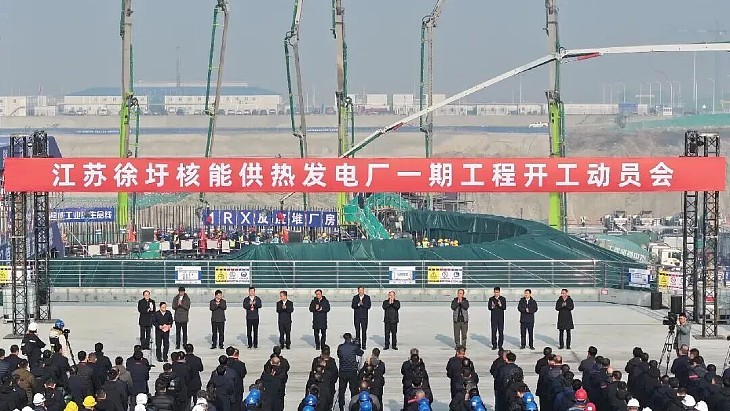Tianwan Phase I - units 1 and 2 - was constructed under a 1992 cooperation agreement between China and Russia. First concrete was poured in October 1999, and the units were commissioned in June 2007 and September 2007, respectively.
Tianwan Phase II - units 3 and 4 - are similar to the first stage of the Tianwan plant, comprising two AES-91 VVER-1000 units designed by Gidropress and supplied by Russian state nuclear corporation Rosatom. First concrete for unit 3 was poured in December 2012, while construction of the fourth unit began in September 2013. Unit 3 achieved first criticality on 29 September last year and was connected to the grid on 30 December. The unit entered commercial operation on 15 February having completed demonstration operation at nominal capacity for 100 hours.
The loading of a total of 163 fuel assemblies into the core of unit 4 was started on 25 August and completed on 2 September. The reactor achieved first criticality at 30 September.
Following permission from the Chinese regulator, power at Tianwan 4 was raised to 25% of capacity, after which the turbine was brought into operation and electrical tests of the field and power delivery systems were carried out. This process was completed at 1.53am on 27 October. "The result of the work was the connection of the power unit to the electricity system," Rosatom said. "All systems of the power unit were operating according to the design mode."
Power output from the reactor will now be maintained at 25%. Dynamic tests will later be performed at 50%, 75% and 100% of capacity. Upon completion of initial testing at full thermal capacity, demonstration operation will proceed at nominal capacity for 100 hours, after which preliminary acceptance procedures will follow. Preliminary acceptance is the starting point of a two-year warranty period for the operation of Tianwan 4. The unit is scheduled to enter commercial operation later this year.
Construction of Tianwan Phase III - units 5 and 6 - was originally scheduled to start in early 2011. However, following the March 2011 accident at Japan's Fukushima Daiichi plant, the Chinese government suspended the approval of new nuclear power projects, including those two units.
The latest Five-Year Plan called for construction of Phase III of the Tianwan plant to be accelerated. China's State Council gave its approval for Tianwan units 5 and 6 - both featuring 1080 MWe ACPR1000 reactors - on 16 December 2015. First safety-related concrete was poured for unit 5 on 27 December 2015, with that for unit 6 poured on 7 September 2016. CNNC plans to put both units 5 and 6 into commercial operation by the end of 2021.
On 8 June, Russia and China signed four agreements, including for the construction of two VVER-1200 reactors as units 7 and 8 of the Tianwan plant. In addition, two VVER-1200 units are to be constructed at the new Xudabao site in Liaoning province.
"The Tianwan nuclear power plant is currently the largest Russian-Chinese power project that is being developed successfully thanks to the synergy of specialists from the two countries," said Alexey Likhachov, director general of Rosatom. "And start-up of the fourth power unit is further proof of that. At the Tianwan plant site we became a united team with our Chinese colleagues, which has facilitated the achievement of this milestone. Our further cooperation, both in the construction of the next phases of the Tianwan plant and on the new Xudapu site, will for sure also be efficient and fruitful."
Connection of Tianwan 4 to the electricity grid brings the number of operable power reactors worldwide to 454, with a combined generating capacity of 400,287 MWe. As such, global nuclear capacity has exceeded 400 GWe for the first time. A further 54 reactors are currently under construction, with a total capacity of 54,675 MWe.

.jpg)




_28178.jpg)
_66891.jpg)
_16128_62584.jpg)





